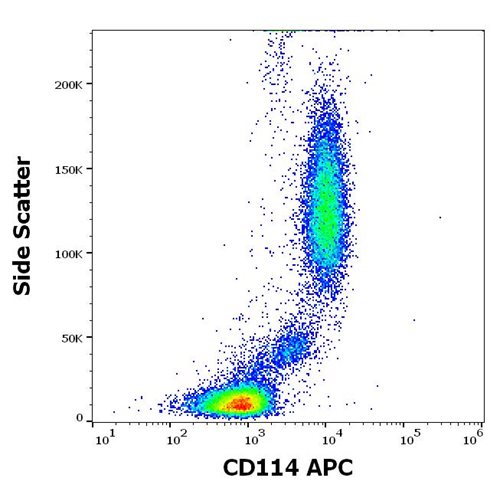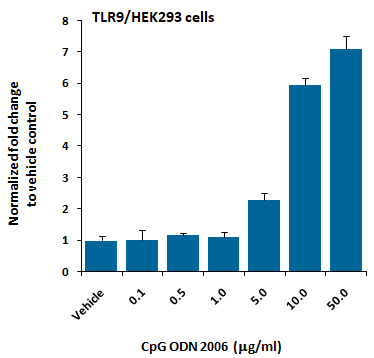Monoclonal Antibody to human TNF-alpha(Discontinued)

Figure-1: 10, 25 and 50 ng recombinant TNF-alpha was used as sample with antibody 10-3537 as primary antibody. A reduced sample treatment was used and a band of 17 kDa is shown
Roll over image to zoom in
Shipping Info:
For estimated delivery dates, please contact us at [email protected]
| Amount : | 500 µg |
| Isotype : | Mouse IgG1 |
| Content : | 0.5 mg, 0.2 µm filtered protein G purified antibody solution in PBS, containing 0.1% bovine serum albumin and 0.02% sodium azide. |
| Storage condition : | Product should be stored at 4 °C. Under recommended storage conditions, product is stable for one year. |
The monoclonal antibody 52B83 reacts with tumor necrosis factor alpha (TNF-alpha). TNF-alpha is a homotrimeric 17 kDa protein, that interacts with either one of the two types of TNF-receptors, termed I and II, leading to receptor cross-linking and signal transduction. The receptors differ strongly in their intra-cellular signaling pathways. TNF-alpha was originally described as a highly cytotoxic cytokine for tumor cells, it causes tumor necrosis in vivo and shows cytolytic activity against tumor cells in vitro. Furthermore,- TNF-alpha is found to be a central mediator in many inflammatory and immunological processes. It can be induced by various products of micro-organisms and by various cytokines leading to expression of a wide variety of- cytokines. The pro-inflammatory properties of- TNF-alpha play a central role in several auto-immune diseases such as rheumatoid arthritis and inhibition by neutralizing molecules have been shown to be beneficial in patients.
FACS analysis: This antibody was used to stain soluble TNF bound to TNF receptors. Cells were fixed in PBA containing 0.2% formaldehyde W: A reduced sample treatment and 15% SDS-Page was used. The band size observed is 17 kDa. IHC-F: 6-µm tissue sections were fixed in acetone for 10 minutes. Dilutions to be used depend on detection system applied. It is recommended that users test the reagent and determine their own optimal dilutions. The typical starting working dilution is 1:50.
For Research Use Only. Not for use in diagnostic/therapeutics procedures.
| Subcellular location: | Secreted |
| Post transnational modification: | O-glycosylated; glycans contain galactose, N-acetylgalactosamine and N-acetylneuraminic acid. |
| BioGrid: | 112979. 269 interactions. |
|
There are currently no product reviews
|



















.png)












